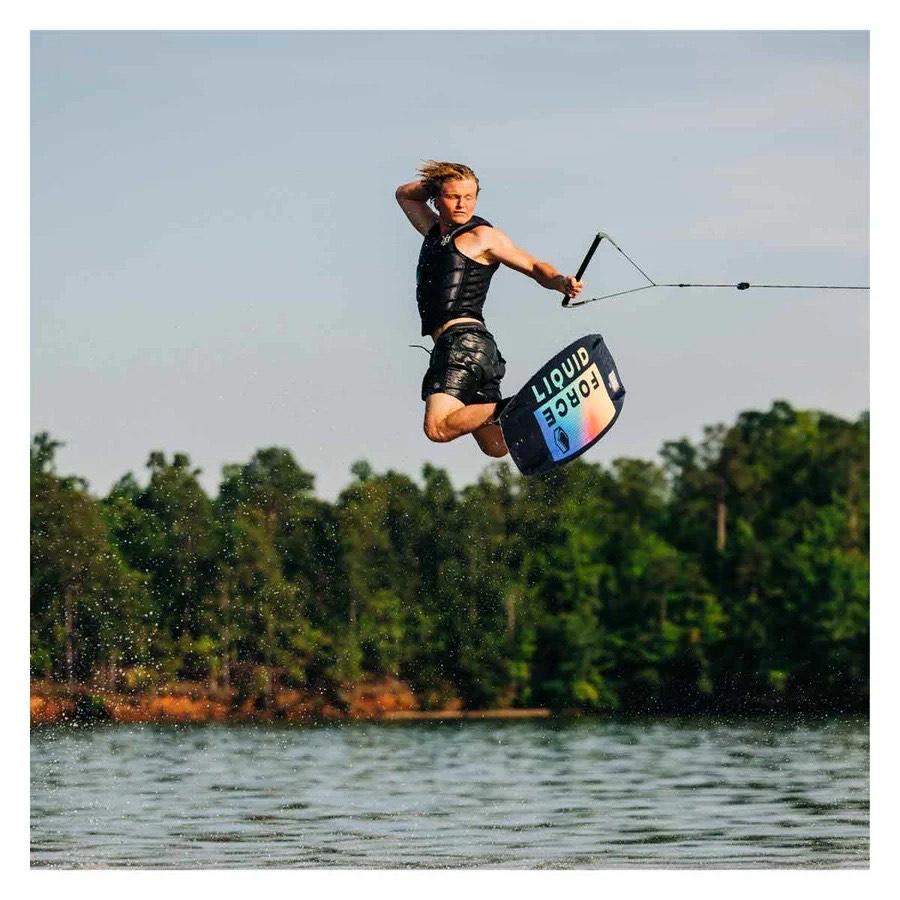Wakeboarding has come a long way since its humble beginnings in the late 1980s. What started as an experimental fusion of surfing, waterskiing, and snowboarding has now evolved into one of the most exciting and dynamic water sports in the world. From flat-water glides to high-flying aerial maneuvers, wakeboarding pushes the limits of balance, skill, and creativity. As the sport has grown, so too has the complexity of the skills required to excel in it. Riders are continually pushing boundaries, mastering new tricks, and evolving techniques that elevate wakeboarding to new heights.
In this article, we’ll explore the journey of skill development in wakeboarding, highlighting how the sport has evolved, the essential skills every rider needs to master, and the ways in which professionals continue to redefine the sport. Whether you’re a beginner trying to find your footing or an experienced rider looking to push your limits, this guide will take you through the uncharted waves of wakeboarding evolution.
The Early Days of Wakeboarding
When wakeboarding first emerged in the 1980s, it was known as “skurfing.” Riders would use surfboards or modified water skis to be towed behind boats, carving turns and gliding over the water’s surface. The early days were rudimentary, with basic boards, minimal equipment, and simple maneuvers. The sport, however, quickly gained momentum as enthusiasts from different disciplines—surfers, snowboarders, and skiers—saw its potential for creativity and thrill.
Wakeboarding, as we know it today, began to take shape in the early 1990s, as specialized boards and bindings were developed. These innovations allowed riders to have greater control over their movements, enabling them to experiment with more advanced tricks. Over time, wakeboarding became less about simply being towed behind a boat and more about using the boat’s wake as a launchpad for aerial maneuvers. This shift marked the beginning of wakeboarding’s transformation from a recreational activity to an extreme sport.
The Fundamentals: Building a Strong Foundation
Before any rider can progress to advanced tricks and techniques, it’s crucial to master the fundamental skills of wakeboarding. These basics form the foundation for every trick and maneuver, and they remain essential no matter how advanced a rider becomes.
- Stance and Balance: A strong wakeboarding stance is the key to maintaining control on the water. Riders should keep their knees bent, shoulders back, and weight distributed evenly across the board. This stance not only provides stability but also makes it easier to react to changes in the water or the boat’s speed. Balance is the foundation of all wakeboarding skills, and riders must learn to adjust their weight depending on whether they’re riding the heelside or toeside edge of the board.
- Edge Control: Just like in snowboarding, edge control is vital for steering the board and generating speed. The wakeboard has two edges—heelside and toeside—and learning how to effectively use both edges allows riders to carve turns, gain speed, and approach the wake with precision. Beginners often find heelside edging easier because it feels more natural to lean back, but toeside edging is equally important for mastering more complex maneuvers.
- Getting Up on the Board: For new riders, one of the biggest challenges is simply getting up on the board. This skill requires a combination of core strength, timing, and balance. Riders need to let the boat’s pull do the work, keeping their arms straight and their knees tucked close to their chest until they rise to a standing position. While it might seem daunting at first, with practice, getting up on the board becomes second nature.
- Riding the Wake: Once comfortable on the board, riders can start exploring the wake itself. Riding the wake involves crossing back and forth over the boat’s wake, using the water’s natural contours to gain speed and perform small jumps. Understanding how to approach the wake and maintain balance while crossing it is a fundamental skill that sets the stage for more advanced tricks.
The Transition to Intermediate Riding: Pushing the Limits
After mastering the basics, wakeboarders begin to experiment with more challenging maneuvers. This phase of skill development is where riders transition from merely riding the wake to using it as a tool for more advanced tricks. Intermediate wakeboarding focuses on refining techniques, building strength, and developing confidence in the air.
- Jumping the Wake: The first major milestone for intermediate riders is learning how to jump the wake. By approaching the wake at an angle and maintaining edge control, riders can use the wake’s natural ramp to launch themselves into the air. This is where edge control becomes critical, as the speed and trajectory of the jump depend on how well the rider uses their edges to generate momentum.
- Grabs and Spins: Once comfortable with jumping the wake, riders can begin incorporating grabs and spins into their jumps. Grabs involve reaching down to hold the board in mid-air, adding style and control to the jump. Spins, on the other hand, require riders to rotate their bodies while airborne. These tricks demand a greater level of coordination and timing, as riders must maintain control while rotating and prepare to land cleanly back on the water.
- Switch Riding: Most wakeboarders have a dominant foot that they lead with when riding, but learning to ride “switch” (with the opposite foot forward) is an essential skill for progressing in the sport. Switch riding improves balance and versatility, allowing riders to approach tricks from different angles and execute spins more fluidly. Mastering this skill also opens the door to performing more complex tricks, as many advanced maneuvers involve riding switch at some point during the trick.
Advanced Wakeboarding: Breaking the Boundaries
As riders continue to refine their skills, they eventually reach the level of advanced wakeboarding, where aerial tricks, flips, and complex combinations take center stage. At this point, wakeboarding becomes as much about creativity and expression as it is about athleticism and technical skill. Riders push the boundaries of what’s possible, developing new tricks and perfecting old ones.
- Inverts: Inverts are a hallmark of advanced wakeboarding, involving flips or rolls while airborne. Tricks like the Tantrum (a backflip off the wake) or the Scarecrow (a front flip with a 180-degree spin) require not only technical skill but also a strong sense of timing and spatial awareness. Inverts are physically demanding and often take time to perfect, but they are among the most visually impressive tricks in the sport.
- Advanced Spins: As riders become more comfortable with spins, they can begin to incorporate multiple rotations into their tricks. Spins can range from 360-degree rotations to 720-degree spins or more. These tricks require precise control of both body and board, as well as the ability to spot the landing while spinning at high speed.
- Rail Riding and Obstacles: For those seeking even greater challenges, many wake parks feature rails, ramps, and other obstacles designed for wakeboarders to slide across and perform tricks. Rail riding combines elements of wakeboarding with skateboarding and snowboarding, requiring excellent balance and control. Riders must approach the rail with precision, maintain their balance while sliding across it, and dismount cleanly back onto the water. These obstacles add an extra layer of complexity to wakeboarding, pushing riders to develop new skills and expand their trick repertoire.
The Evolution of Wakeboarding: Continuous Innovation
Wakeboarding is not a static sport. As new equipment is developed and new techniques are discovered, the boundaries of what’s possible continue to expand. Professional wakeboarders are constantly pushing the sport forward, introducing new tricks, refining old ones, and exploring innovative ways to ride the wake.
Crossover Disciplines: One of the most exciting aspects of wakeboarding’s evolution is its crossover with other sports. Many wakeboarders draw inspiration from skateboarding, snowboarding, and even freestyle motocross, incorporating elements from these sports into their tricks. This cross-pollination of ideas has led to the development of new trick styles and combinations, making wakeboarding more dynamic and diverse.
Cable Parks and Innovations: In addition to boat-towed wakeboarding, cable parks have become increasingly popular. These parks use overhead cables to tow riders, eliminating the need for a boat and offering a controlled environment for learning new tricks. Cable parks also feature a variety of obstacles, including rails, kickers, and sliders, providing riders with endless opportunities for creativity.
Conclusion: Riding the Uncharted Waves
The evolution of wakeboarding skills reflects the journey of the sport itself—from its early days as a simple water-based activity to the adrenaline-fueled spectacle it is today. For riders, the process of mastering wakeboarding is an ever-evolving challenge, requiring dedication, practice, and a willingness to push boundaries.
Whether you’re just starting out or are an experienced rider seeking new challenges, wakeboarding offers endless opportunities for growth and exploration. The uncharted waves of the sport beckon to those who dare to ride them, and the journey toward mastering wakeboarding skills is one of constant discovery. As the sport continues to evolve, so too will the riders who take on its challenges, forever seeking to carve new paths on the water and reach new heights in the air.
Stay engaged for the latest news and alerts! Buzz Revolve.




